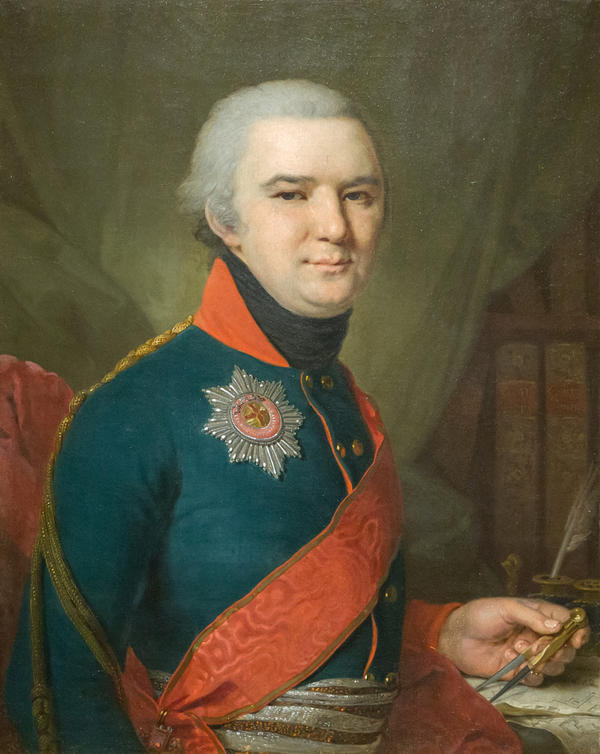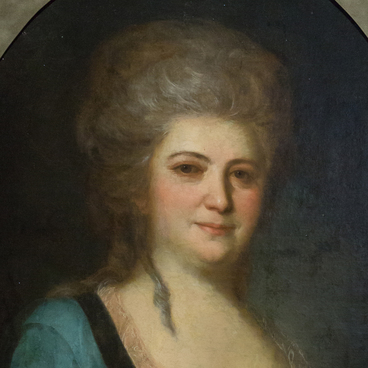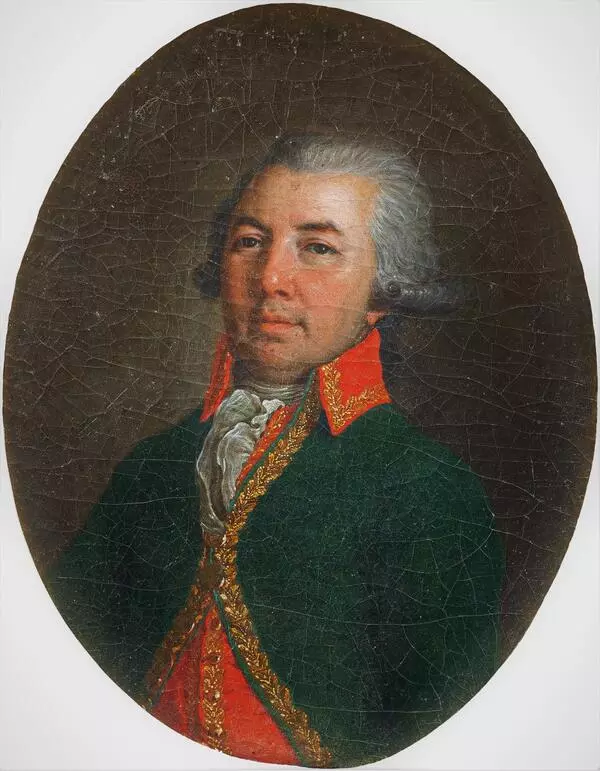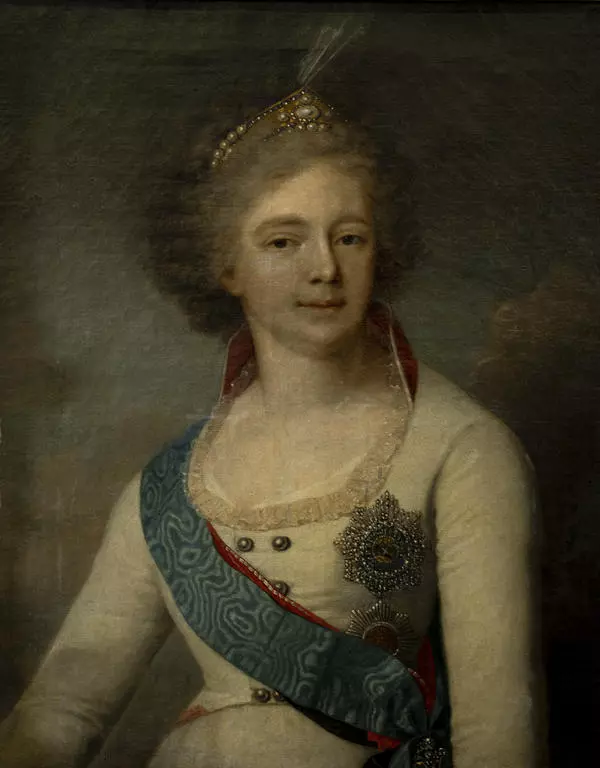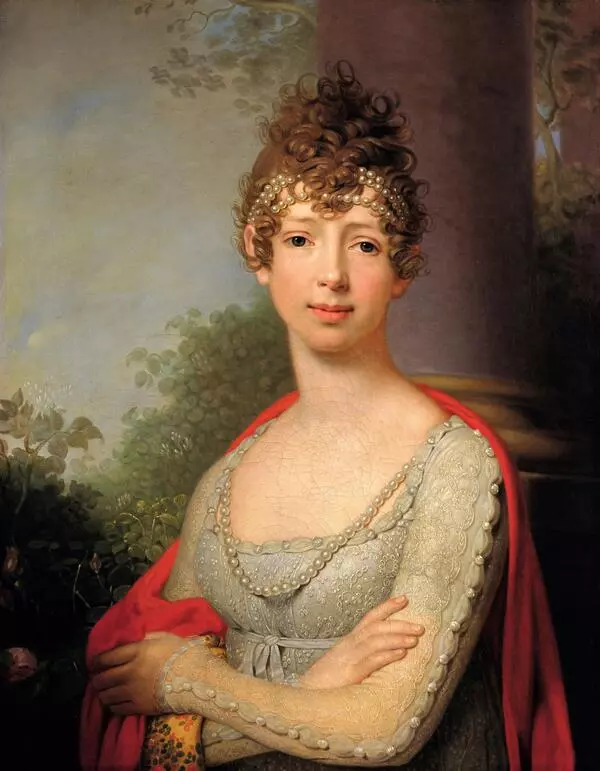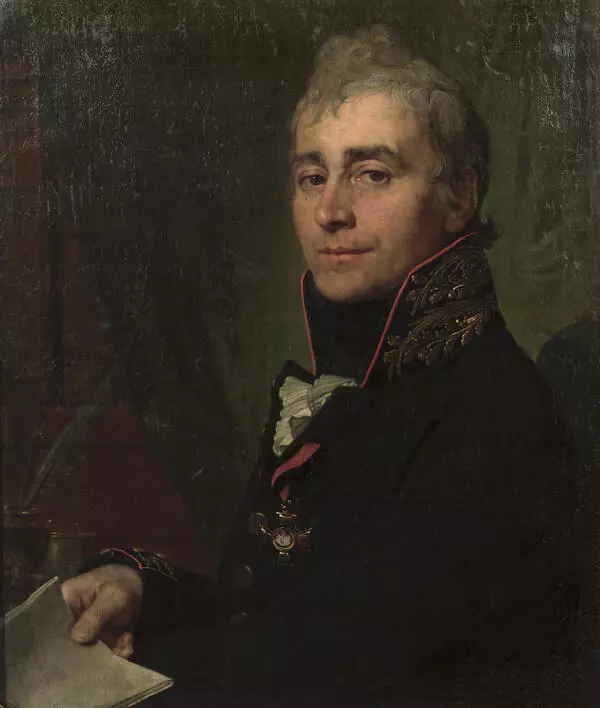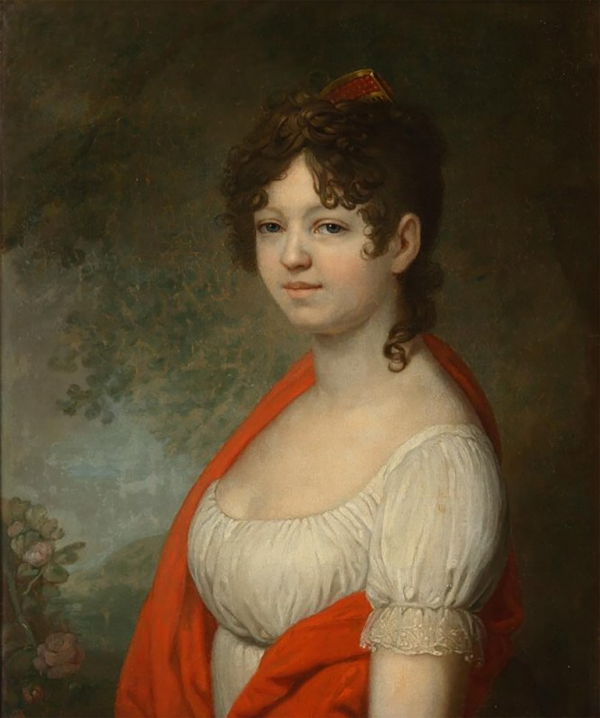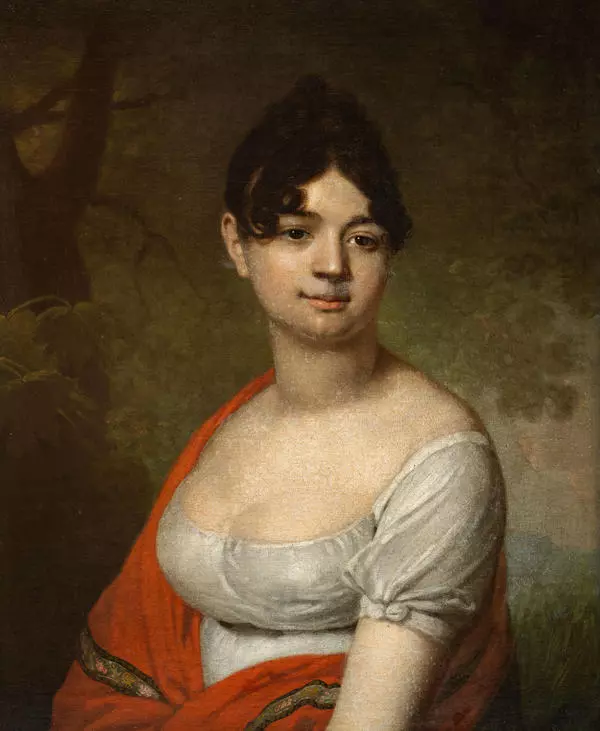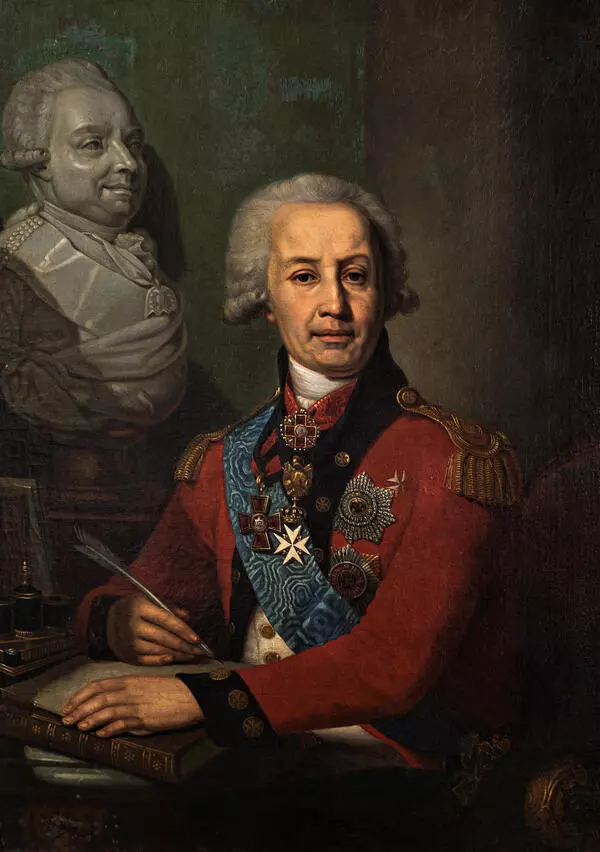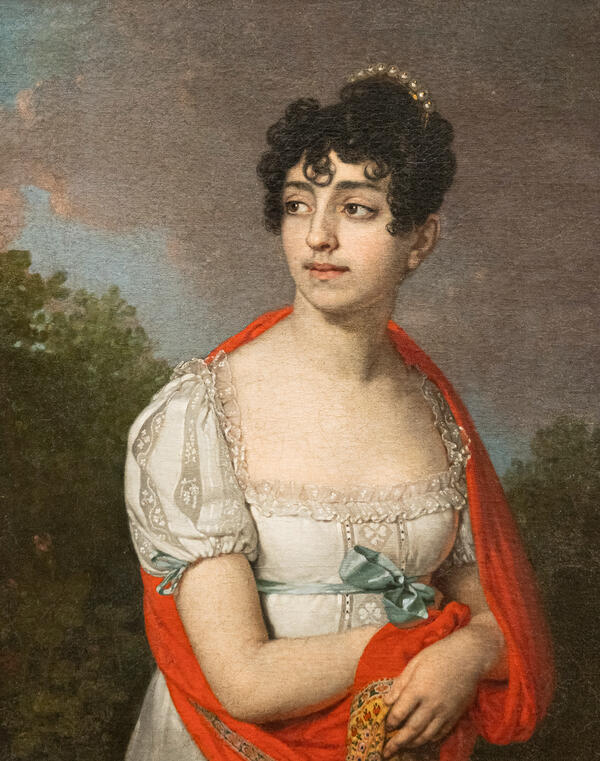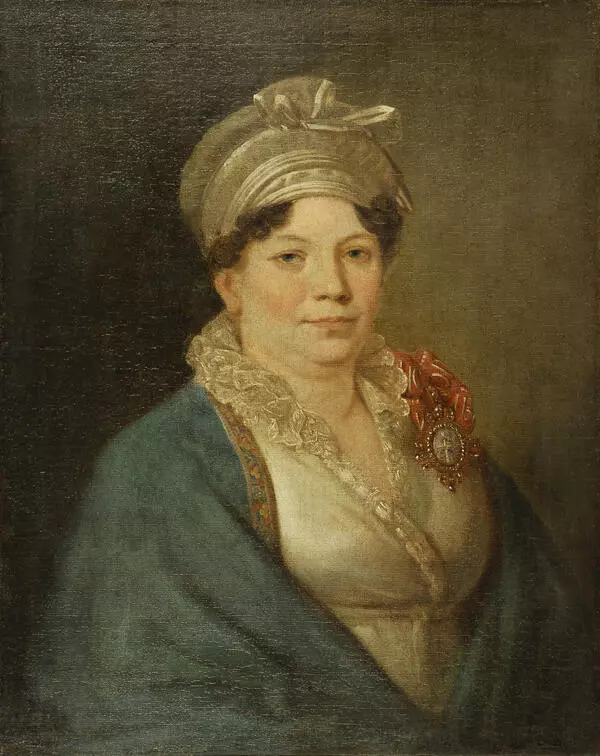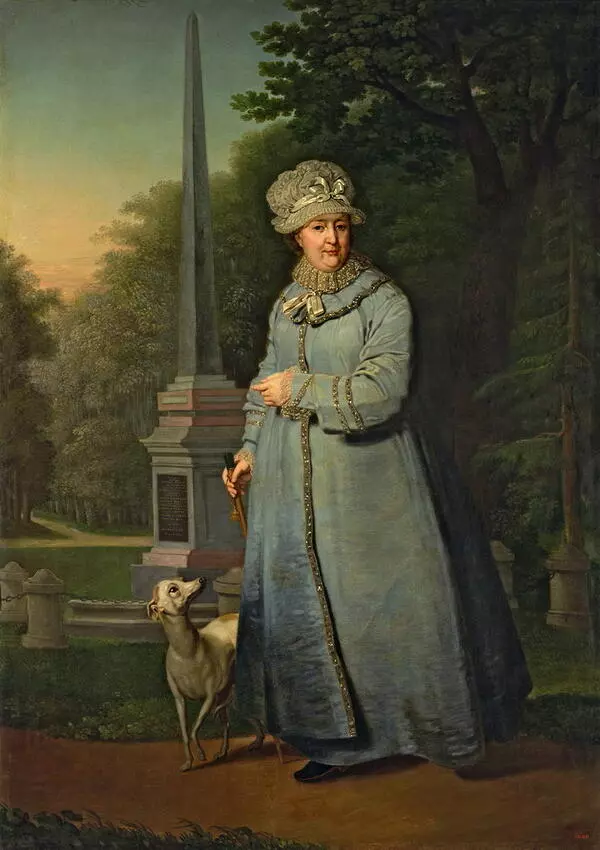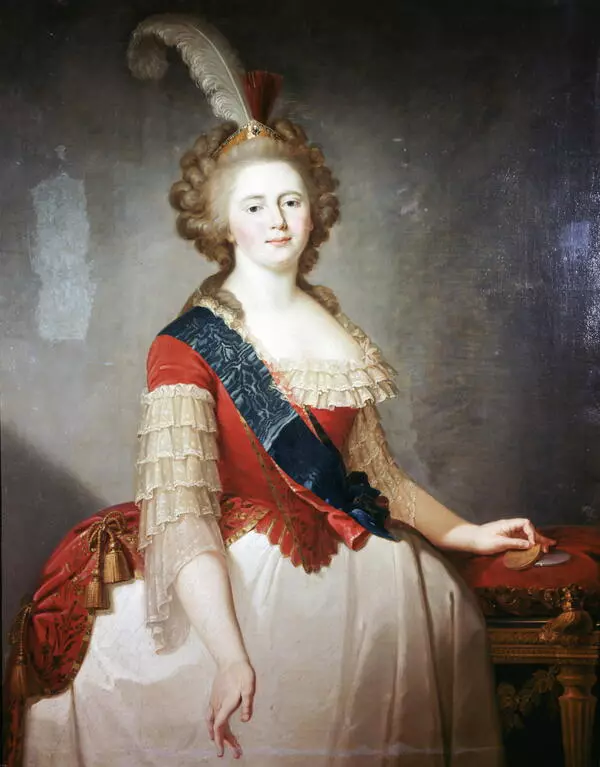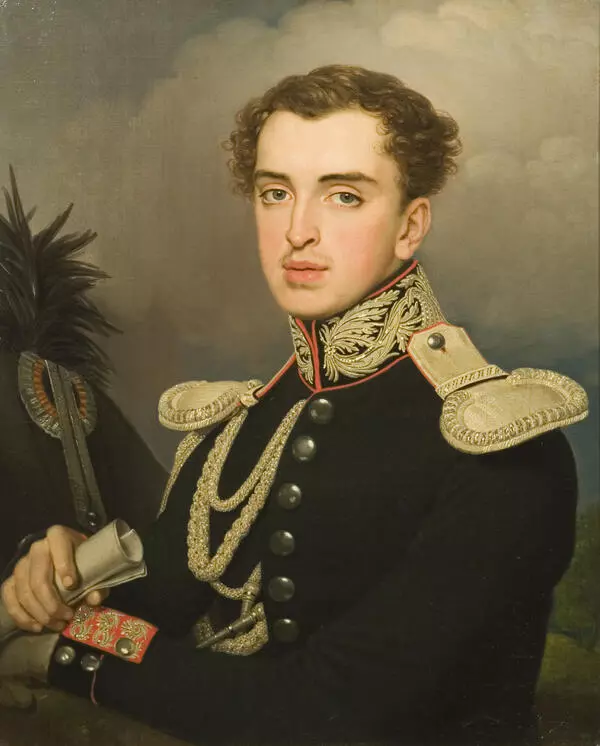Vladimir Borovikovsky painted the portrait of Prince Sergey Dolgorukov in 1802. Sergey Dolgorukov was Lieutenant General and Commandant of the Peter and Paul fortress; he took part in the 1812 war and served as a diplomat in the Hague and in Naples. The Dolgorukov family was inscribed in the Velvet Book, the genealogy book of the most noble, princely families of Russia. The Dolgorukovs belonged to one of the branches of the Obolensky princes, descendants of Riurik.
Portrait of S.N. Dolgorukov
Время создания
1802
Размер
74,2x60 cm
Техника
oil on canvas
Коллекция
3
Открыть в приложении#1
Vladimir Borovikovsky
Portrait of S.N. Dolgorukov
#8
#9
The picture is done in the genre of a semi-ceremonial portrait which was popular at the time. In a portrait like that the figure of the subject was depicted bust-length on neutral background. A lot of attention was given to detailed rendering of the costume. The artist painted Sergey Dolgorukov in a double-breasted uniform jacket with a stand-up diagonally cut collar and golden aiguillettes – shoulder cords. The dark-green jacket of then tail-coat type is decorated with two rows of gilded buttons. On the right side of his chest the Lieutenant General has an eight-pointed silver star. It is the Order of Saint Anna First Degree. Part of the jacket is covered with a broad cummerbund wound around his waist twice.
Russian culture of the second half of the 18th — first quarter of the 19th century was marked by the triumph of Enlightenment. All arts and sciences were rapidly developing at that time. Painting was also affected by the ideals of Enlightenment. Sergey Dolgorukov is depicted in the portrait sitting in his study against the background of books, drawings, and an inkwell with quills. In his left hand he is holding a pair of compasses. When looking at the picture, the viewers were supposed to understand that they were seeing an educated statesman.
#11
Vladimir Borovikovsky was born in 1757 to a family of an icon painter in Mirgorod, Ukraine. He watched his elder brothers and father painting icons for churches and learned the basics of painting from them. When travelling in the south of Russia, Empress Catherine II saw the works of the young master. She liked his pictures so much that she requested that Borovikovsky move to Saint Petersburg and learn painting there.
The artist moved to the capital when he was already 31 years old. Because of his age he could not be enrolled in the Academy of Arts, so he took private lessons from masters of portraiture Dmitry Levitsky and Johann Lampi from Austria. In 1794, Vladimir Borovikovsky painted a ceremonial portrait of Catherine II, which she was very pleased with. A year later, Vladimir Borovikovsky was accorded the title of an Academic of Portraiture. In 1802, he was appointed Councillor of the St. Petersburg Academy of Arts.
#12
In his art, Vladimir Borovikovsky combined two trends of painting – Sentimentalism and Classicism. On the one hand, he was very particular about the texture and translucence of his paints. It was important for him to convey the character of his subject, his mood, and individuality. On the other hand, he drew on most popular Classicistic techniques. Canvases done in this genre were characterised by prevalence of the brown colour in the foreground, green in the mid-ground and blue in background. It added volume to pictures. The composition and the colour palette were austere and reserved.
#13
New Jerusalem Museum
читать дальшескрыть
00:00
00:00
1x
Portrait of S.N. Dolgorukov
Время создания
1802
Размер
74,2x60 cm
Техника
oil on canvas
Коллекция
3
Открыть в приложении
Поделиться

